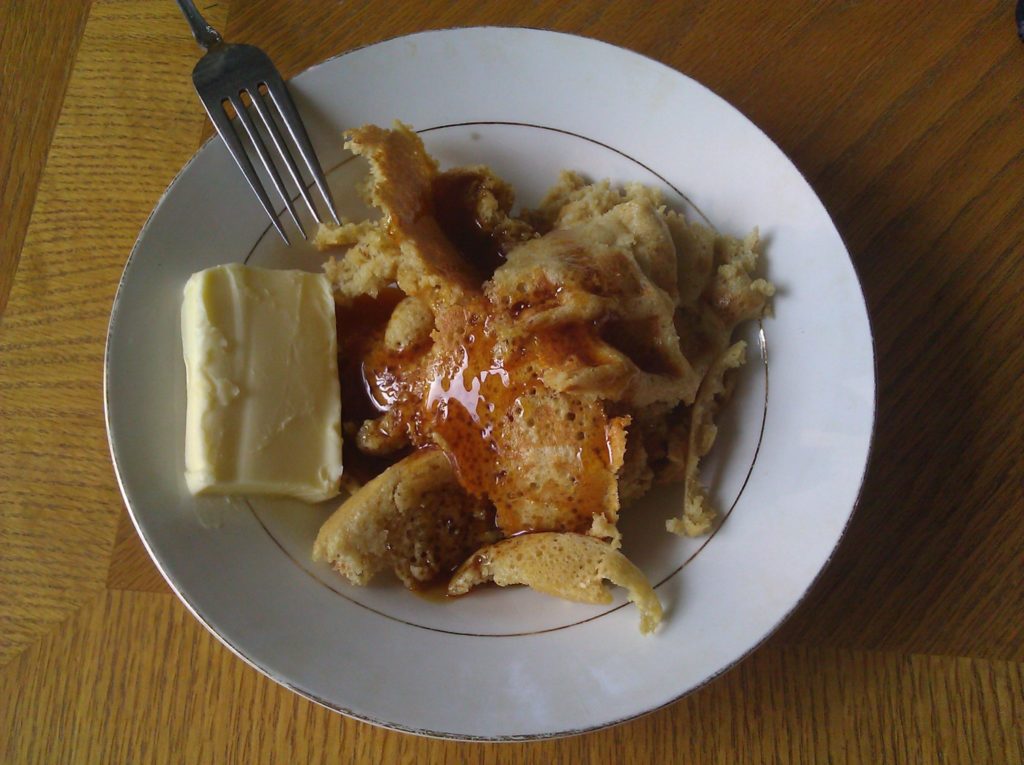
Delving into Traditional Eating for the first time inevitably uncovers the fact that modern methods for preparing grains and legumes can be extremely damaging to health over the long term particularly if numerous servings of these foods are consumed on a daily basis as recommended by conventional dietitians and nutritionists.
Even if you take the time and care to make your own bread at home with freshly ground grain, if you do not follow the centuries-old traditions for eliminating anti-nutrients and maximizing the nutrition in the grain prior to baking, you could, in fact, be doing yourself and your family more harm than good.
In the video below which I filmed as part of a Beginner Video Series for the Weston A. Price Foundation, I show you the basics for soaking grains and legumes so that you can enjoy these wonderful foods in your home and experience health benefits from doing so rather than health depletion.
Following these guidelines makes food more digestible and more nutritious as vitamins and minerals become more bioavailable.
As a huge bonus, preparing grains properly results in more satisfaction per bite. This translates into easier portion control which makes eating less and losing weight more attainable.
For a complete transcript of this video which is translatable into any language, click here.
Soaking Grains and Legumes Video How-To
This lesson describes the very important traditional practice of soaking legumes and grains. Note that in the past few years, the use of chickpea cooking water, called aquafaba, has become popular in vegan circles.
Note that while legumes are a traditional food, using the cooking water as an egg replacement is not. In fact, it is quite dangerous to gut health as it is loaded with anti-nutrients.
So enjoy your legumes and grains, but be sure to toss the soaking and cooking water!
More Information on Soaking
These articles contain more information on soaking once you get the hang of grains:
- How to soak raw nuts
- Soaking raw seeds
- How to soak beans before cooking
- Soaked lentils
- Does white rice need soaking?








Just curious…why does it take so much water to soak the rice (12 cups seems like a lot). Thanks for all you do and share!
That’s a good question … this is what the researchers found. It could possibly still be very effective with less water, but there isn’t a study I can find to support this.
I’m glad I found this site. I’m gradually leaning towards adding breads and legumes to my diet after eating very, very low carbs for many years. Eating mostly meat/fat is one way but I find it harder and harder. So the result is that I must learn to eat like my great-grandmother would have – soaking, fermenting and proper preparation of the good foods we have been blessed with. Thanks for all the information
Hello Sarah,
thank you for your good job. I have a question. If I understood well, it’s the acidic component (whey, lemon juice, vinegar etc…) in the water where we soak the legumes/grains that “catches” the phytic acid. So when the soaking ends, should we still boil those grains/legumes in the same liquid where we soaked them, instead of throwing the liquid away and using new water? Don’t we end up eating the phytic acid anyway, if we cook the grains/legumes in that same liquid used for soaking?
The phytic acid is deactivated by the soaking.
Exactly! I have auto immune disorders RA PsA, ect, mostly joint pain and inflammation. Once I quit eating sugar, all of it! Started soaking rice, lentils, and such I have had so much less pain, and my stomach doesn’t blow up like a balloon anymore! I don’t eat white rice, or any that’s not soaked, plus I add a lot of turmeric to everything! I don’t have a problem with sunflower seeds, they have never bothered me! Thanks for the information!
Hi Sarah,
I am confused about a couple of things and hoping for your point on view!
First off: I often have a hard time remembering to soak my rice in advance. I do prefer to cook the rice fresh rather than cooking and freezing it in portions. With that said, I am wondering if you have ever tried freezing the soaked rice in portions to grab and cook fresh on short notice. I haven’t been able to find any resources for this online so I am starting to think I am the only crazy person to have ever thought this up lol.
Second: I buy sprouted spelt flour to use in baking to avoid the soaking process. Do you feel that this is equivalent or inferior to soaking my own flour? A lot of options for sprouted rice and other grains are seeming to be increasing in popularity as well. What are your thoughts on these kinds of products?
Third: I LOVE overnight oats soaked in the refrigerator with a bit of yogurt, chia seeds and other flavorings. There is no cooking required with this method which is also a bonus. But there is no acid so the end result is not soured, just soaked. This is such a quick easy breakfast and I am not a fan of the soured/ warmed oats made on the stove so I hate to give it up. Do you have any suggestions on how I can keep enjoying this awesome, fast breakfast?!
Sorry to bombard you. These questions have been burning away for way too long! Thank you in advance 🙂
Dear Sarah, i’m so confused what to soak in acid and what in baking soda…
Can you plz. put a list of what to soak in what.?
I thought you said garbanzo soak in baking soda and that what i have been doing….
it is a no kidney bean like you said…